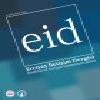Kişilerarası İletişim Sürecinde Toplumsal Cinsiyet Kimliği Kalıpyargılarının Belirlenmesi: İletişim Kaynağının Beden Dili Üzerinden Bir İnceleme
Toplumsal Cinsiyet, Beden Dili, Kalıpyargı, Kişilerarası İletişim
Determining Stereotypes about the Gender Identity in Interpersonal Communication Process: A Research On Body Language Of the Communication Source
Gender, Body Language, Stereotype, İnterpersonal Communication,
___
- Adaçay, F.R. (2014). Toplumsal Cinsiyet ve Kalkınma. Bursa: Ekin Yayınevi.
- Akkoyun, F. (1983). Kişiliğin Projektif Testlerle Değerlendirilmesi. Ankara Üniversitesi Eğitim Bilimleri Fakültesi Dergisi, 16(2), 397-408.
- Arıkan, R. (2004). Araştırma Teknikleri ve Rapor Hazırlama. Ankara: Asil Yayıncılık.
- Best, D.L., Williams, J.E., Cloud, J.M., Davis, S., Robertson, L., Edwards, J., Giles, H. ve Fowles, J. (1977). Development of Sex-Trait Stereotypes Among Young Children in the United States, England, and Ireland. Child Development, 48(4), 1375-1384.
- Blank, P., Rosenthal, R., Snodgrass, S.E., DePaulo, B.M. ve Zuckerman, M. (1981). Sex Differences in Eavesdropping on Nonverbal Cues: Developmental Changes. Journal of Personality and Social Psychology, 41(2), 391-396.
- Broverman, I.K., Vogel, S., Raymond, D.B., Clarkson, F.M. ve Rosenkrantz, P.S. (1972). Sex-Role Stereotypes: A Current Appraisal. Journal of Social Issues, 28(2), 59- 78.
- Carli, L.L. (2001). Gender and Social Influence. Journal of Social Issues, 37(4), 725- 741.
- Deaux, K. ve Lewis, L. (1984). Structure of Gender Stereotypes: Interrelationships Among Components and Gender Label. Journal of Personality and Social Psychology, 46(5), 991-1004.
- Deaux, K. ve Major, B. (1987). Putting Gender Into Context: An Interactive Model of Gender-Related Behavior. Psychological Review, 94(3), 369-389.
- Devine, P.G. ve Elliot, A.J. (1995). Are Racial Stereotypes Really Fading? The Princeton Trilogy Revisited. Personality and Social Psychology Bulletin, 21(11), 1139- 1150.
- Diekman, A.B. ve Eagly, A.H. (2000). Stereotypes as Dynamic Constructs: Women and Men of the Past, Present, and Future. Personality and Social Psychology Bulletin, 26, 1171-1188.
- Dökmen, Ü. (2006). İletişim Çalışmaları ve Empati. Ankara: Sistem Yayıncılık.
- Dökmen, Z. (2012). Toplumsal Cinsiyet Sosyal Psikolojik Açıklamalar. İstanbul: Remzi Kitapevi.
- Eagly, A.H. and Johannesen-Schmidt, M.C. (2001). The Leadership Styles of Women and Men. Journal of Social Issues, 57(4), 781-797.
- Eagly, A.H. ve Kite, M.E. (1987). Are Stereotypes of Nationalities Applied to Both Women and Men?. Journal of Personality and Social Psychology, 53(3), 451- 462.
- Ersoy, E. (2009). Cinsiyet Kültürü İçerisinde Kadın ve Erkek Kimliği (Malatya Örneği). Fırat Üniversitesi Sosyal Bilimler Dergisi, 19(2), 209-230.
- Gilbert, G.M. (1951). Stereotype Persistence and Change Among College Students. Journal of Personality and Social Psychology, 46(2), 245-254.
- Gürüz, D. ve Eğinli, A.T. (2011). Kişilerarası İletişim Bilgiler-Etkiler-Engeller. İstanbul: Nobel Yayıncılık.
- Güngör, N. (2011). İletişim Kavramlar Yaklaşımlar. Ankara: Siyasal Kitapevi.
- Hall, J.A. (1978). Gender Effects in Decoding Nonverbal Cues. Psychological Bulletin, 85(4), 845-857.
- Hamilton, D.L. (1979). A Cognitive-Attributional Analysis of Stereotyping. Advances in Experimental Social Psychology, 12, 53-84.
- Harlak, H. (2000) Önyargılar: Psiko-Sosyal Bir İnceleme. İstanbul: Sistem Yayıncılık.
- İsen, G. ve Batmaz, V. (2006). Ben ve Toplum. İstanbul: Salyangoz Yayıncılık.
- İslamoğlu, A.H. (2003). Bilimsel Araştırma Yöntemleri. İstanbul: Beta Basım.
- Karlins, M., Coffman, T.L. ve Walters, G. (1969). On the Fading of Social Stereotypes: Studies in Three Generations of College Students. Journal of Personality and Social Psychology, 13(1), 1-16.
- Katz, D. ve Braly, K. (1933) Racial Stereotypes of One Hundred College Students. Journal of Abnormal and Social Psychology, 28(3), 280-290.
- Knapp, M.L. (1972). The Field of Nonverbal Communication: An Overview. C.J. Steward ve B. Kendall (Ed.) On Speech Communication: An Anthology of Contemporary Writings and Messages, New York: Holt, Rinehart & Winston, 57-72.
- Madon, S., Max, G., Aboufadel, K., Montiel, E., Smith A., Palumbo, P. ve Jussim, L. (2001). Ethnic and National Stereotypes: The Princeton Trilogy Revisited and Revised. Personality and Social Psychology Bulletin, 27I(8), 996-1010.
- Matthews, G., Jones, D.M. ve Chamberlain, G.A. (1990). Refining the Measurement of Mood: The UWIST Mood Adjective Checklist. British Journal of Psychology, 81(1), 7-42.
- Mutlu, E. (1998). İletişim Sözlüğü. İstanbul: Bilim & Sanat Yayıncılık.
- Rosenkrantz, P., Vogel, S., Bee, H., Broverman, I. ve Broverman, D.M. (1968). Sex-Role Stereotypes and Self-Concepts in College Students. Journal of Consulting and Clinical Psychology, 32(3), 287-295.
- Somer, O. (1998). Türkiye’de Kişilik Özelliği Tanımlayan Sıfatların Yapısı ve Beş Faktör Modeli. Türk Psikoloji Dergisi, 42(13),17-32.
- Spence, J.T., Helmreich, R. ve Stapp, J. (1975). Rating of Self and Peers on SexRole Attributes and Their Relationship to Self-Esteem and Conceptions of Masculinity and Feminity. Journal of Personality and Social Psychology, 32(1), 29-39.
- Stangor, C. ve Lange, J.E. (1994). Mental Representations of Social Groups: Advances in Understanding Stereotypes and Stereotyping. M.P. Zanna (Ed) Advances in Experimental Social Psychology, New York, Academic Press, 375-416.
- Stier, D. ve Hall, J. (1984). Gender Differences in Touch: An Empirical and Theorical Review. Journal of Personality and Social Psychology, 47(2), 440-459.
- Türkiye İstatistik Kurumu, Adrese Dayalı Nüfus Kayıt Sistemi Sonuçları, 2017.
- Williams, J.E., Satterwhite, R.C., ve Best, D.L. (1999). Pancultural Gender Stereotypes Revisited: The Five Factor Model. Sex Roles, 40(7-8), 513-525.
- Williams, J.E. ve Best, D.L. (1982). Measuring Sex Stereotypes: A Thirty-Nation Study. California: Sage Publication.
- Vatandaş, C. (2007). Toplumsal Cinsiyet ve Cinsiyet Rollerinin Algılanışı. Sosyoloji Konferansları, 35, 29-56.
- ISSN: 1308-3198
- Yayın Aralığı: Yılda 2 Sayı
- Başlangıç: 2009
- Yayıncı: Erciyes Üniversitesi İletişim Fakültesi
Marka Değeri En Yüksek 100 Türk Markasının Sosyal Medya Kullanımları Üzerine Bir İnceleme
Burcu ORALHAN, Kumru UYAR, İsmail Vefa BAYIRBAŞ
Tiffany & Co., Cartier ve Bulgari— Lüks Mücevherde Basılı Reklam Analizi
Medyatik Şiddetin Eleştirisine Sinemasal Bir Yaklaşım: Katil Doğanlar
Elif KORALP ÖZEL, Şadiye DENİZ
Esra BAYRAK, Fadimana TANACI, Ayşe Nur DAĞLI, Şükrü BALCI
Dijital Haberleşme Çağında Yerel Basının Karşılaştığı Sorunlar
Gelin-Kaynana İletişiminin Niteliğini Belirleyen Kültürel Etmenler
Hastane-Hasta İlişkisi Bağlamında Hasta Sadakati: Sosyal Medyanın Aracı Rolü
Hikmet TOSYALI, Cem Sefa SÜTÇÜ, Furkan TOSYALI
Film Anlatısında Kahramanın Değişen Özne Konumu: Başkalarının Hayatı Filmi Örneği
Kolejlerin Açık Hava Reklamlarında Çocukluğun Sunumuna Dair Bir İnceleme
